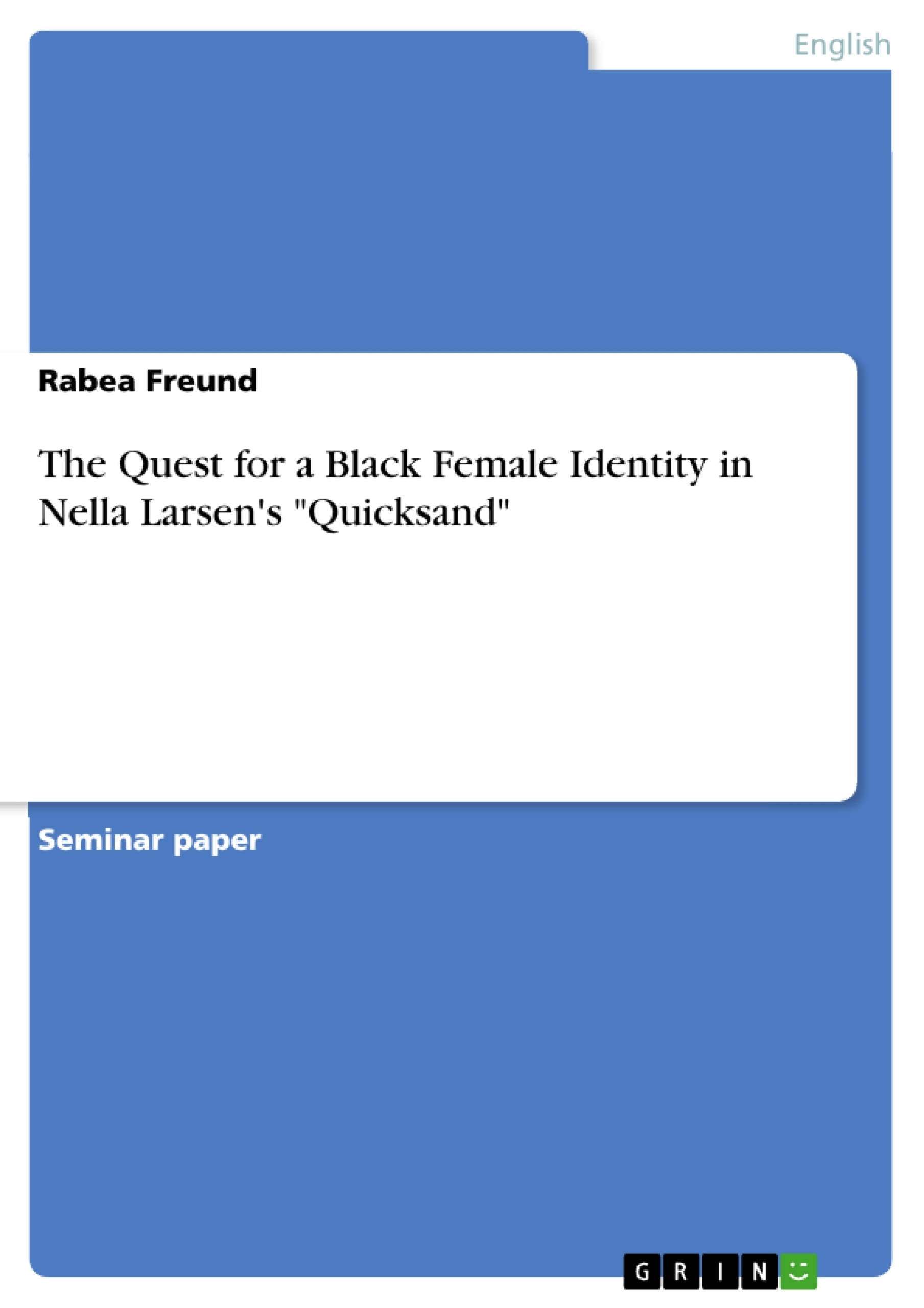Nella Larsen’s Quicksand was published to critical acclaim in 1928 and is said
to be one of the key texts of the Harlem Renaissance era. Larsen herself was of
Danish-Carribean ancestry and was highly interested in issues of racial
identity, especially as they relate to being female. For that reason one should
not be surprised that Quicksand focuses on the protagonist’s struggles toward
selfhood, her attempts to find her place in the world as a woman who is
considered neither white nor black.
The child of a Danish mother and a black West Indian father, a socalled
“mulatto”, Helga Crane finds herself outside of the black as well as the
white world, fully comfortable in neither one nor the other. During her
unhappy childhood she learns to regard her skin color with hatred and selfloathing,
resulting in a deeply rooted sense of insecurity about her blackness
and mixed heritage, which continues to be felt all her life. Internalized (white)
stereotypes about black womens´ promiscuous, “primitive” and immoral
sexuality lead Helga to fear and repress her sensuality and female desires. As
she detests and completely denies these emotions she is incapable of
developing an identity as a woman either.
In this seminar paper I will argue that Nella Larsen’s Quicksand is
about Helga Crane’s search for a black female identity which she will fail to
find. Further, my aim is to demonstrate how intimately connected race and
gender oppressions are, since imposed definitions of blackness and
womanhood complicate Helgas search for her personal identity as a black
woman.
As Quicksand has a geographical symmetry to it, I will follow this
pattern in my analysis. It starts out in the South in Naxos where Helga works as
a teacher, then moves on to Chicago and Harlem, from there it shifts to
Copenhagen, returns back to Harlem and finally ends in the deep South, in a
tiny Alabama town, where Helga’s search ends in tragedy.
Table of Contents
- 1. Introduction
- 2. Helga's Journey: The Search for her Black Female Self
- 2.1 Naxos
- 2.2 Chicago
- 2.3 Harlem
- 2.4 Copenhagen
- 2.5 From Harlem to Rural Alabama
- 3. Conclusion
Objectives and Key Themes
This seminar paper analyzes Nella Larsen's Quicksand, focusing on Helga Crane's search for a black female identity and the interwoven nature of racial and gender oppression. The paper explores how societal expectations and internalized stereotypes impact Helga's self-perception and her attempts to find a place in the world.
- Helga Crane's struggle for self-discovery as a biracial woman.
- The impact of racial and gender stereotypes on identity formation.
- The limitations and constraints of societal expectations on individual expression.
- The exploration of identity through geographical and social settings.
- The tension between individual desires and community expectations.
Chapter Summaries
Chapter 1: Introduction provides background on Nella Larsen's Quicksand and introduces the central theme of Helga Crane's quest for identity as a black woman in the context of the Harlem Renaissance. It outlines the paper's argument that Helga ultimately fails to find this identity.
Chapter 2: Helga's Journey: The Search for her Black Female Self begins with Helga's experience at Naxos, a Southern black college, where she initially attempts to create a sense of self through carefully curated surroundings. However, her isolation and discontent with the stifling uniformity of the community are highlighted. This chapter traces her journey through various geographical locations and social settings, exploring how these environments shape her evolving self-perception.
Chapter 2.1: Naxos details Helga's initial isolation and attempts to create a sense of self through material possessions and aesthetic choices, which clash with the constraints and expectations of the Naxos community. The chapter shows the conflict between Helga's individuality and the rigid norms of the college.
- Arbeit zitieren
- Rabea Freund (Autor:in), 2004, The Quest for a Black Female Identity in Nella Larsen's "Quicksand", München, GRIN Verlag, https://www.hausarbeiten.de/document/122035


